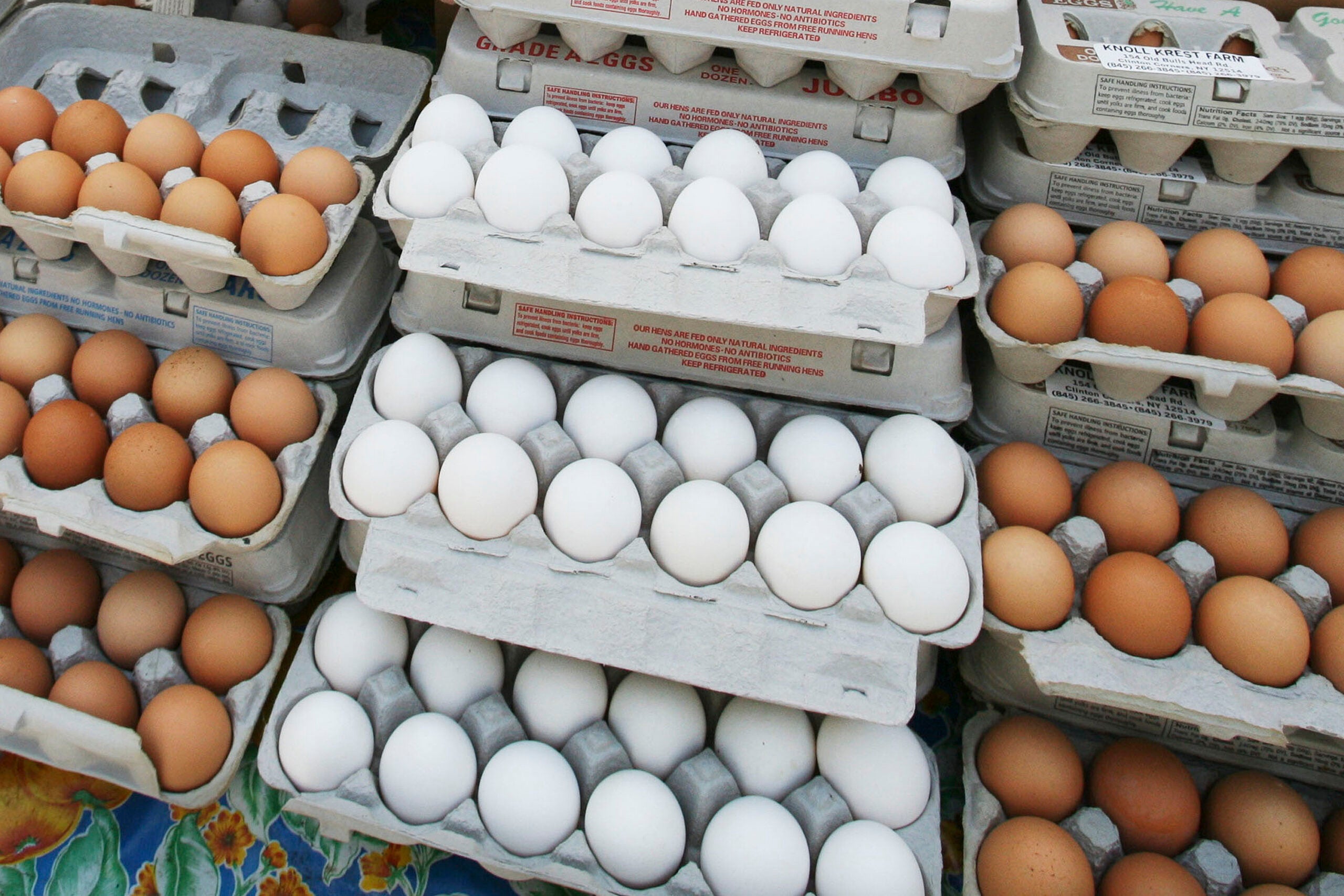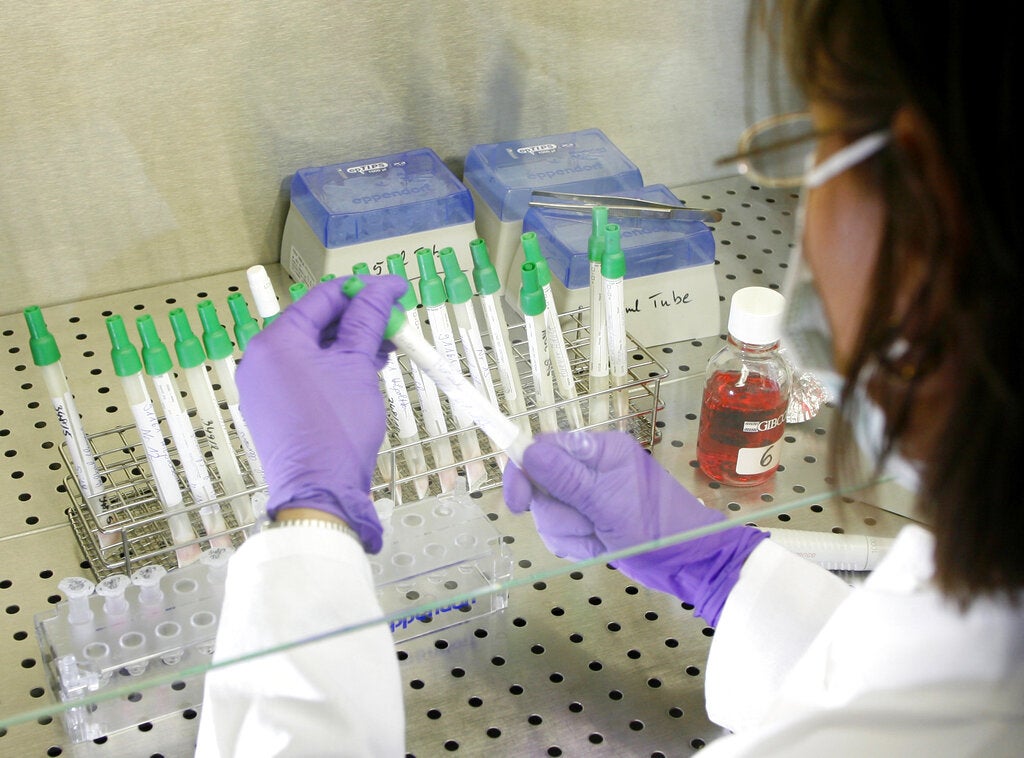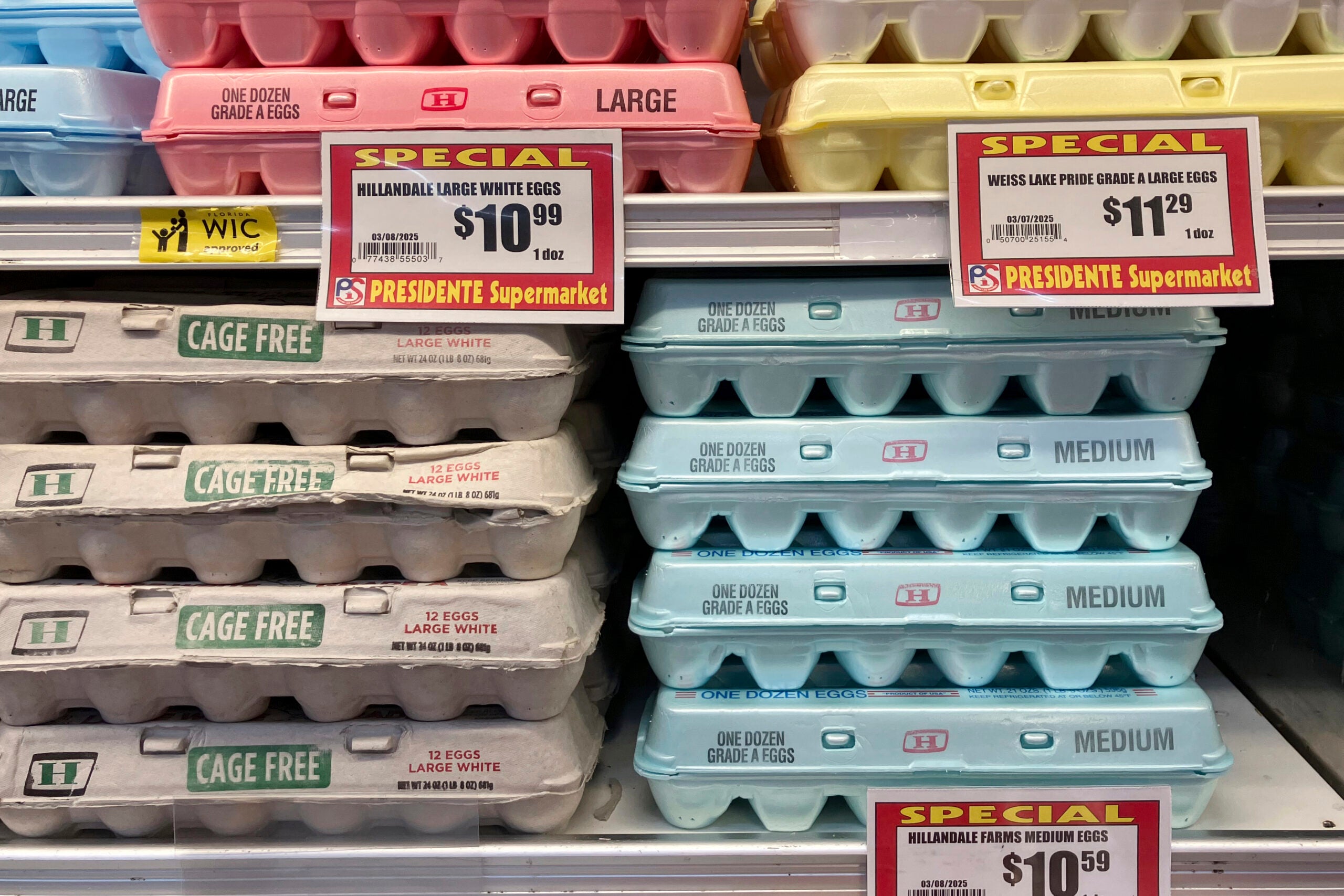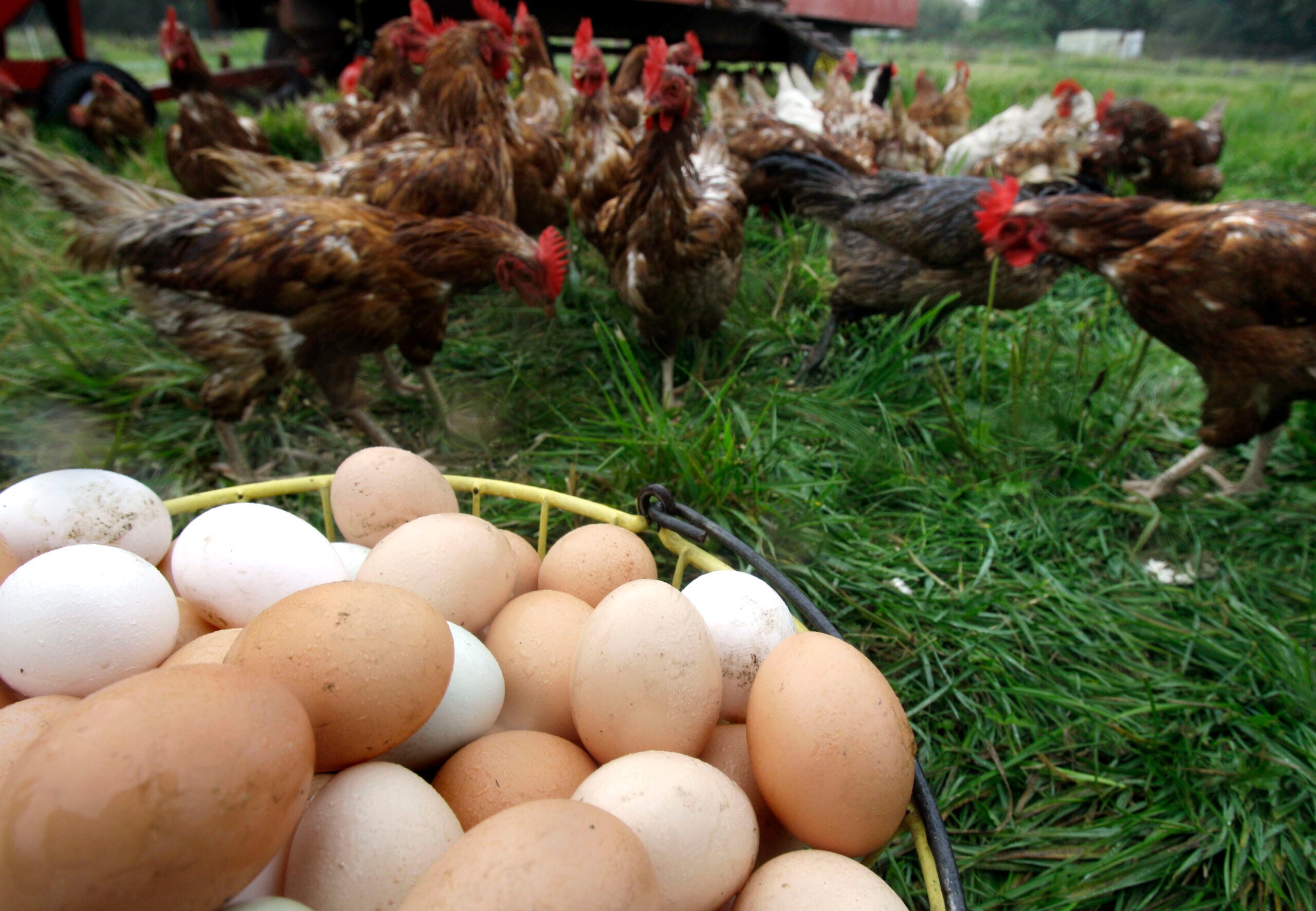Consumer egg prices have been high for months, sparking an abundance of jokes on social media, some conspiracy theories and even an accusation of price gouging by a farm advocacy group.
John Brunnquell is CEO of Egg Innovations, which produces free-range and pasture-raised eggs and has 15 farms in Wisconsin. Brunnquell said industry leaders are very aware of all the talk, but he said there’s no scheme behind the price jump.
“There was no cynical master plan by the egg industry to stimulate prices,” he said. “There’s no evil conspiracy that poor feed is going out so birds lay less eggs.”
Stay informed on the latest news
Sign up for WPR’s email newsletter.
Brunnquell said 2022 was a challenging year for the egg industry, starting with higher supply costs due to inflation.
“Everything we buy, from cartons and boxes and freight and fuel, pretty much every input we purchase went up in cost in 2022,” he said.
The supply of eggs was hit by highly-pathogenic avian influenza last spring and returned in the fall, which Brunnquell said led to the death of around 38 million laying hens across the country. With fewer eggs available, he said wholesale prices ended up hitting record highs. But in the first five weeks of 2023, those prices have come down around 60 percent from what they were in November and December.
“We were trading (wholesale) eggs at about $5.40 a dozen, and those same eggs today we’re trading at $1.70,” Brunnquell said. “There’s about a four-week lag usually from wholesale prices to consumer retail prices. So over the next month or so, we should see a significant decrease in selling prices at the grocery store.”
Brunnquell said because his eggs are free-range, they’re sold at a flat price throughout the year. But for the commodity egg industry, he said the last few months have been a profitable time.
“If you did not get avian influenza, and you were a commodity producer, 2022 was a very lucrative year,” he said. “We’re in a commodity industry though, and you go back 18 months ago, we were selling eggs at a significant loss as an industry. So it’s really just the ebbs and flows of the commodity cycle.”
Ron Kean, poultry specialist for the University of Wisconsin-Madison, said profits have been weakened by the increased supply costs from inflation and from biosecurity measures put in place to stop the spread of avian flu.
Kean said Wisconsin’s poultry industry has fared better than other parts of the country, with only 11 cases of avian flu at commercial producers in the last year. But he said most signs point to a return of the virus this spring.
“It still seems to be pretty prevalent in the wild bird population,” Kean said. “So my guess is as the migration comes back, we’ll see some cases. Hopefully they’ll be isolated and limited.”
He said how strongly the disease comes back this year will play a role in what happens with egg prices moving forward, as well as what happens with the rest of the economy.
“There are other factors going into that, inflation, that we may not get back to the, you know, below $1 a dozen. But I suspect prices will come down,” Kean said.
Kean said one thing that has remained surprisingly steady is consumer demand for eggs, even with much higher prices. He said a January report from the U.S. Department of Agriculture’s Economic Research Service shows per capita egg disappearance, or consumption, for 2022 is estimated at 277.5 eggs per person. That’s about three eggs fewer than the previous year.
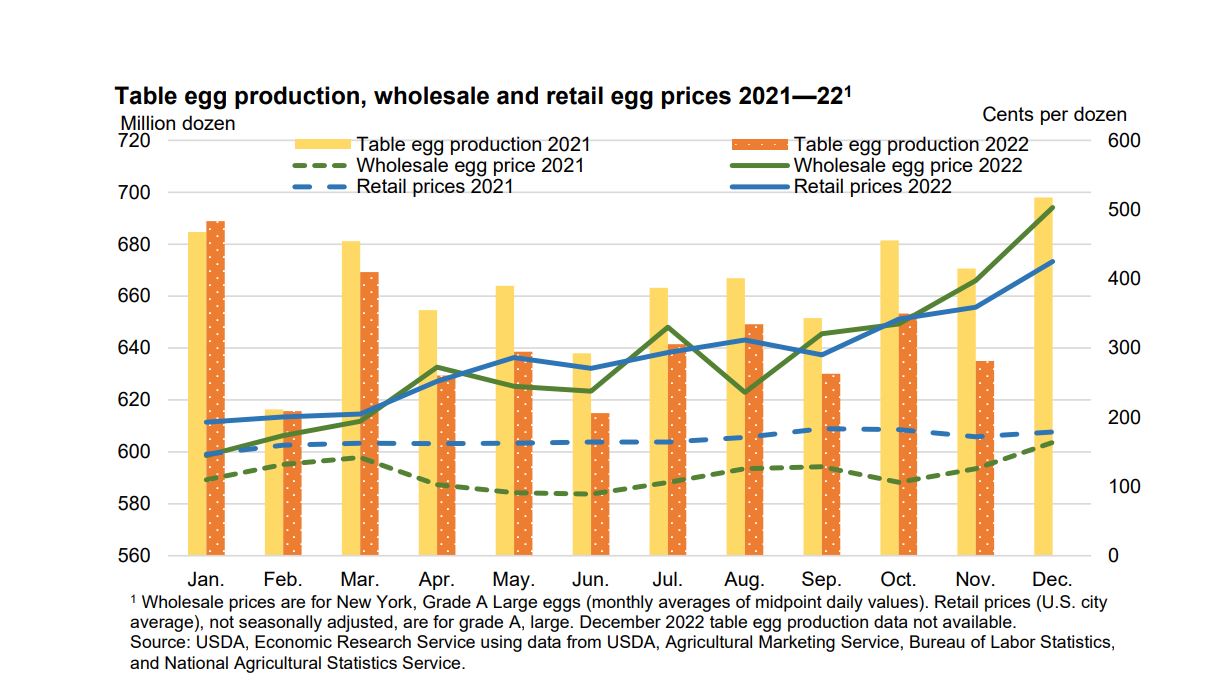
The report said the strong demand is likely because eggs are a staple with few substitutes and “for much of the year, they represented the lowest cost protein alternative.” Kean said egg prices were also at more normal levels for much of the year, tempering any decline seen in November and December when prices hit their peak.
Brunnquell said the continued consumption of eggs despite high prices was a surprise for many egg producers.
“We really didn’t know what would happen when commodity eggs were $5, $6 a dozen,” he said. “What we found is it’s still a staple. People weren’t happy about paying those prices, but you know, with Thanksgiving, Christmas, etc., the purchasing continued at a very steady pace.”
Brunnquell said higher prices for basic eggs also meant that his free-range and cage free eggs were at times the cheapest option on the shelf, bringing in a surge of new customers and sales. He’s hopeful a portion of those customers will continue to buy his products at a premium even when regular egg prices return to normal.
Wisconsin Public Radio, © Copyright 2025, Board of Regents of the University of Wisconsin System and Wisconsin Educational Communications Board.
